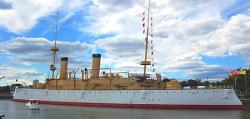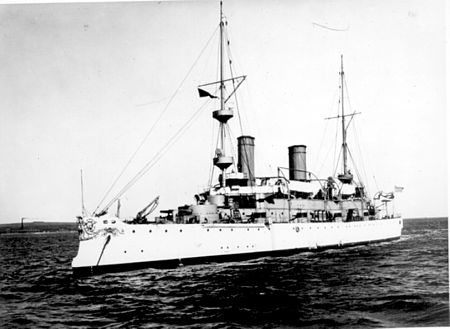
The U.S.S. Olympia is one of the two surviving ships of the era of the vertical reciprocating steam engine. The Cruiser Olympia, launched in 1892, was one of the first naval ships to be built with these engines. As part of the new American steel Navy, the construction of the Olympia was authorized in 1888 as cruiser number 6. As part of a Congressionally-mandated program to establish complete domestic capability for warship construction, the ship's contract was awarded to the Union Iron Works of San Francisco. At that time, the Navy had difficulties in obtaining heavy steel armor plate and gun forgings; these shortages compounded the usual difficulties of obtaining naval equipment and machinery on the West Coast. For these reasons the ship's keel was not laid until June 1891.
The Olympia was propelled by twin screws driven by three-cylinder triple expansion engines, together delivering 16,850 indicated horsepower at 139 rpm. The engines were designed to produce 6,750 indicated horsepower apiece at 129 rpm. Each propeller was 14' 9" in diameter. Each of the three cylinders is supported at the back on an inverted Y frame of wrought iron, and at the front on two forged steel cylindrical columns. The original design called for cast steel columns both front and back, but difficulties in obtaining cast steel castings at the time made it necessary to change this detail while retaining strength and light weight. The main pistons are of cast steel, and the bedplates manganese bronze. Intermediate and low-pressure cylinders are steam-jacketed. Cylinder bores are 42, 59, and 92 inches, and the stroke of each piston is 42 inches. Steam, at 160 psi, was supplied by six Scotch boilers, four double-ended and two single-ended. The boilers had 40 furnaces working under forced draft on a closed-stokehold system. Total machinery weight was 1,239 tons, and the coal consumption rate was 2.19 pounds per ihp-hour. On speed trials, the Olympia reached 21.686 knots, fast for that time



